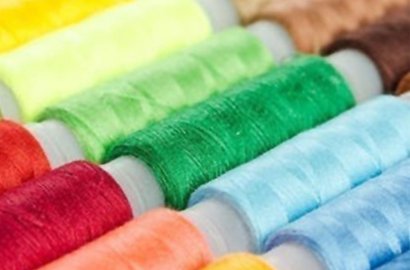溶解过程

技术型纤维无论是天然的还是合成的,都是通过一系列步骤,将原料转化为粘稠的,均匀的,脱泡的纺丝浆液后生产出来的。
对于任何需要溶解步骤的纤维,利斯特捏合反应器技术可生产高质量的纺丝浆液,并且以最大的生产量和最低的成本达到高纤维品质。
捏合反应器独特的工艺特性提供了强力混合和捏合效果,而且具有恒定的表面更新和可调的停留时间等特性。工业化的单条大产能生产线是利斯特技术众多优势之一。
我们的优势
- 高效的自清洁作用能够最大限度的减少死区的产生、物料的累积以及降解等现象;
- 优异的捏合及混合作用利于物料体系均匀同质化;
- 较低的过程剪切力;
- 高效的能量传递;
- 较高的表面更新率;
- 较大的汽相自由扩散空间;
- 较大的传热面积,利于准确及均一化的温度控制;
- 工艺过程可设计为连续化操作;
- 适合黏稠或高粘度物系的工艺需求;
- 较宽且可灵活调整的平均停留时间区间;
- 狭窄的停留时间分布(平推反应)
- 广泛而灵活的停留时间范围
- 从实验到工业装置的工程放大可靠且低风险
应用范例
莱赛尔纤维
纤维素和添加剂在利斯特捏合反应器中连续溶解,利斯特溶解机可提供热处理,蒸发和脱泡以及强力混合。最后形成一种玻璃态清澈,淡黄色的纺丝浆液,这种浆液高度均匀并且不含气泡和溶解气体。
根据工艺不同,溶剂可以是甲基吗啉(NMMNO),各种离子液体,酸或碱。
对位芳纶 (芳纶1414)
生产对位芳纶纤维通常是先将聚对苯二甲酰对苯二胺聚合物粉末(PPTA)溶解在浓硫酸中从而制成的粘稠纺丝浆液然后湿法喷丝制得。放热溶解过程释放的热能有助于聚合物熔化和溶解。聚合物溶液是一种粘稠的非牛顿体的状态。制备纺丝浆液工艺要求最终形成一种精确控制高聚合物浓度的均匀的脱泡的溶液。
相关资料下载
| 标题 | 描述 | 语言 | 发表时间 | 下载 |
|---|---|---|---|---|
| Perfect dissolving technology for very good fiber quality | For decades, conventional polymerisation has been the norm in the production of elastomers. The time and cost involved in removing and treating solvents in the final stages of production were acceptable. Yet as pressure builds on manufacturers to reduce operating costs, there is greater urgency to develop processes that can help streamline costs and production techniques. One such effort has yielded extremely promising results. | English | 2015 | |
| Direkt in der Polymerlösung entgasen | Der zunehmende Kostendruck macht keinen Halt vor der Produktion von Elastomeren. Gefragt sind intensivierte Prozesse, die unnötige Verfahrensschritte ersparen und sowohl Zeitaufwand wie auch Kosten senken. Nun liefert ein innovativer Ansatz aus der Schweiz, die sogenannte Direct Devolatilization (direkte Entgasung) von Polymerlösungen, vielversprechende Ergebnisse. | English | 2015 | |
| Perfect fiber quality from perfect dissolving technology | Fiber, filament, flies and foil are the final products of a complex process of mixing, dissolving, spinning, washing and drying of raw material. Many specialists believe that the spinning part is the only relevant processing step for the final fiber quality. This belief falls short, as the fiber quality also depends on the dissolving step before the spinning step. | English | 2014 | |
| Concentrated dissolving for homogeneous spinning dope | In conventional spinning dope production, capacity is typically a function of the maximum processing viscosity the spinning plant can handle. Often the prior dissolving process step is limited by this fact. In a typical wet spinning operation, dope viscosity ranges from 500-2500 Pa ·s (zero shear viscosity at 95 °C) can be handled. For processors looking to meet rising demand with world-sca le plants, the limitations imposed by high viscosity dope sol utions are challenging and costly. List AG, Arisdorf/Switzerland, have now adapted the company’s high viscosity processing technology in order to meet the difficult processing challenges of today’s high-production fiber lines. The technology can easily handle 20,000-200,000 Pa·s (zero shear viscosity). | English | 2013 | |
| Improved Lyocell dissolving system | The Iyo cell fiber process is developed to transform cellulose to a man-made cotton-like fiber. The lyocell process includes a number of processing steps. The dissolving step is the most important one. It represents the heart of the lyocell technology. Kneaders developed by List AG, Arisdorf/Switzerland, are successfully applied for the continuous dissolving step whereby raw materials of different origin can be processed and transferred into a spinabie dope. | English | 2006 | |
| Process flexibility and process safety | As world consumption of textile fibers expands with the rapid growth of Asia and other developing countries, sources of fibers other than cotton and rayon must be developed and brought to market to meet demand. Cellulose fibers (Lyocell fibers) can meet these expanding needs because of the specific qualities and characteristics of the fiber, as well as the vast availability of the raw materials. | English | 2004 | |
| Innovative Weiterentwicklung der Lyocell Tehnologie | Der LYOCELL-Prozess ist eine moderne umweltfreundliche Möglichkeit zur Umwandlung von verschiedensten cellulosischen Rohmaterialien der Natur in Fasern, Filamente und Folien zur weiteren Verarbeitung in der Textilindustrie, der Verpackungsindustrie oder als Strukturbildner in technischen Anwendungen. Die Nassreißfestigkeit der LYOCELL-Faser übertrifft sogar die der Bauwollfaser. | Deutsch | 2004 | |
| Optimization of cellulose dissolution stage | LIST further optimized the cellulose dissolution technology, which was introduced in 1992. This succeeded the production of excellent spinning solution qualities, produced from a variety of low cost raw materials. The technology fulfils the current high safety standards. | English | 2001 | |
| Continous dissolution process of cellulose in NMMO | A new dissolution process for cellulose spinning solution was developed. As Basis for the new process served the classic cellulosic fiber production process. In the last 30 years or so the conventional viscose process became environmentally critical. Evaluated with regard to its environmental viability it was found to create considerable water and air pollution. This conclusion ignited the research and development of new technologies with less environmental impact. | English | 1999 |
